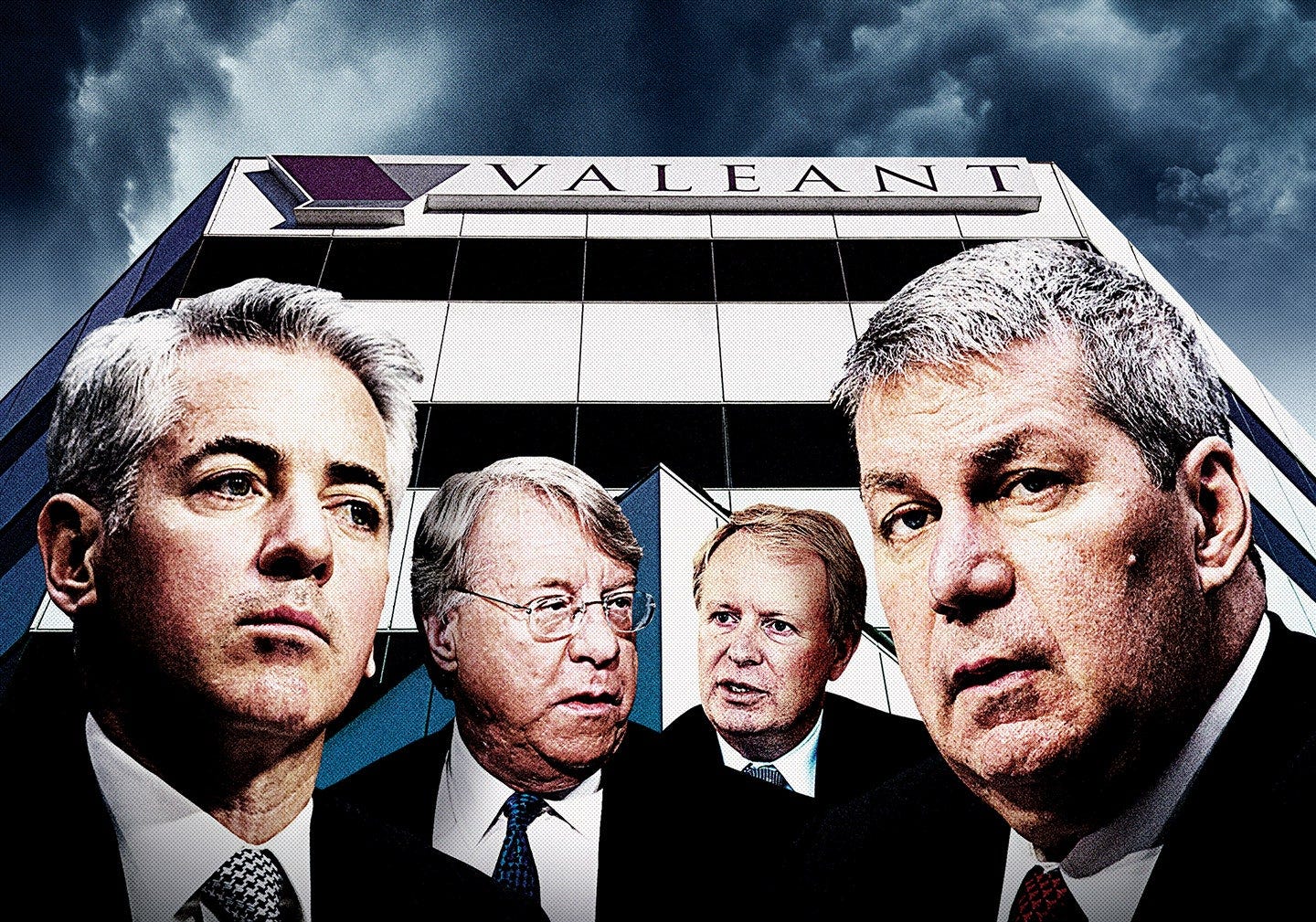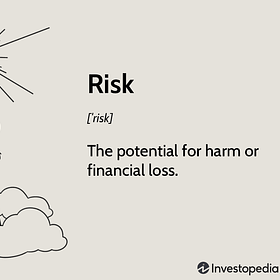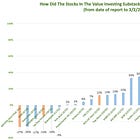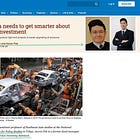Is EBITDA Really Bullsh*t?
How John Malone Used EBITDA Correctly vs. How Valeant Pharmaceutical Abused It Instead
Charlie Munger is known for not holding back when speaking his mind — and two particular victims of his financial vitriol are “Volatility as Risk” and “EBITDA”. I’ve previously covered why Volatility isn’t Risk in an earlier article — so check it out at the link below if you haven’t yet.
However, today we’re going to address the latter of Munger’s source of angst, the financial concept of EBITDA. Most of us are already familiar with the term — which is quite self-explanatory, meaning “Earnings before Interest, Tax, Depreciation and Amortization”.
So why does the value investing community have such a gripe with the widespread usage of EBITDA — insofar as to call it “bullshit earnings”? Let’s dive into it.
Chapters In This Article:
How EBITDA Was Born
If you’ve read William Thorndike’s seminal investing manual The Outsider CEOs, you’ll know that EBITDA was first coined by none other than the legendary Cable Cowboy John Malone. Readers of the book will know that Malone was basically the predecessor to Jeff Bezos, as he understood that the Cable industry he was in thrived on economies of scale — since controlling the national supply & distribution of cable channels dictated how much pricing power he possessed in the industry.
This was similar to how Bezos foresaw years ahead of everyone else how early Amazon would eventually need to match Walmart’s economies of scale in the e-commerce wars — while the stock market was still preoccupied with Amazon vs. eBay. We can actually find evidence of such plans to grow Amazon’s national warehouse footprint as far back as 2005 — I’ve analyzed early Amazon’s financial statements in the article linked below, so check it out if you’re interested:
During his tenure as TCI’s CEO from 1973-1996, Malone sought to use the cable company’s reliably recurring FCF (from selling monthly cable bundles) to assume huge amounts of debt. This debt was subsequently used to acquire other Cable studios and massively expand TCI’s economies of scale. Predictably, doing this resulted in TCI having high interest expense & lower profits (and therefore lower taxes) — even though the company was sporting both massive revenue & GP growth.
Since Wall Street only cared about profits in the 70’s, TMT analysts covering TCI initially didn’t understand Malone’s growth strategy and penalized its share price due to its lackluster profits. This led Malone to coin the term EBITDA in order to persuade Wall Street of TCI’s business merits. The way he explained it to analysts went something like this:
TCI’s growth strategy necessitated adopting lots of debt to acquire other Cable companies, which led to higher interest expense vs. peers. This led TCI to have lower profits (and therefore lower taxes). Thus, a logical way to better convey TCI’s steady-state economics would involve backing out its Interest and Tax expense from its Net Profits to arrive at EBIT.
Furthermore, since much of that debt was deployed towards the acquisition of highly capital-intensive Cable companies/infrastructure, further backing out Depreciation & Amortization (i.e. accrued acquisition CAPEX) from EBIT to arrive at EBITDA also made sense to highlight TCI’s growing Operating Profits.
And since TCI was in rapid acquisition mode, it was only natural for its Depreciation & Amortization expense to be growing faster than its Operating Profits. Malone’s objective in using EBITDA as his KPI was to demonstrate what TCI’s steady-state economics could potentially look like once TCI stopped assuming debt to acquire competitor firms and started prioritizing shareholder return. Fortunately for him, TCI had ample FCF to back up his claim.
In a playbook resembling the mega-Tech firms of the early-2000’s, Malone would later monetize all of that early growth after TCI had become the dominant Cable company and started prioritizing profits. Throughout Malone’s tenure as CEO until AT&T’s acquisition of TCI in 1999, TCI’s share price would go on to outstrip all of its Cable industry peers — even crushing Berkshire Hathaway’s LT share price performance over the same period, at a stunning 30.3% CAGR over a 26-year period:
Valeant: When EBITDA Isn’t Backed by FCF

However, problems arise when EBITDA is used to justify a firm’s lack of Net Profits when it isn’t matched by the attendant FCF — and what better way to demonstrate how EBITDA is commonly abused than with the Valeant Pharmaceutical scandal of 2015/16. This was a value trap which involved the abuse of EBITDA to such an extent that its stock was nicknamed the ‘hedge fund hotel’ — after its ability to snare dozens of hedge fund victims with its near-fraud, including the legendary Bill Ackman.
To oversimplify, Valeant’s former CEO Mike Pearson attempted to circumvent the Big Pharma business model of inventing new drugs — which generally involved very expensive R&D costs for new drugs. As we shall see below, this is because >80% of all new drug R&D actually fail to achieve commercial viability, and the remaining ~20% which do hit store shelves need to subsidize all the failures.
Pearson’s pitch was that he could do away with such wanton waste by refocusing Valeant’s scarce capital towards acquiring other Big Pharma firms which had already successfully developed ‘branded generic’ drugs — rather than create new ones from scratch. In theory, this could circumvent up to 80% of the aforementioned R&D costs — which could instead be channelled towards more efficient acquisitions, as they involved much less uncertainty. Additionally, ‘branded generic’ drugs had the bonus of possessing the same kind of pricing power as branded retail goods (which I’ve explained before in a previous article) — former ‘pharma bro’ Martin Shkreli went to jail for abusing exactly this aspect of ‘branded generic’ drugs.
Thereafter, Valeant’s CEO Mike Pearson would ask investors to look past Valeant’s deteriorating Net Profits in favor of its improving EBITDA since he joined. However, there was one big difference between TCI’s and Valeant’s proposed use of EBITDA to demonstrate their respective underlying business economics — the latter’s lack of FCF, which in stark contrast was veritably gushing out of the former. Here’s how I would describe the difference between the two:
In Malone’s cable industry, the underground cable infrastructure which TCI acquired from its competitors resembled a “toll road” of sorts — as once a cable company owns the “right of way” to a particular town/city’s cable infrastructure, no other cable competitor can deliver TV channels through those cable “highways” without the former’s permission. This gave any cable company which owned a particular region’s cable assets an incredible moat.
Such cable infrastructure were also generally considered to have a perpetual useful life (for all practical economic purposes), and involved very limited maintenance CAPEX requirements. Evidence of the latter can be seen in how Malone would hold out on upgrading TCI’s cable infrastructure for as long as possible, much to the chagrin of his customers. And in the absence of competitors, those customers were stuck paying monthly cable fees to TCI — which would generate reliably recurring FCF come rain or shine. In fact, Malone could even take it a step further and raise prices whenever he wanted to (i.e. pricing power). What were TCI’s customers going to do — stop watching TV? There were no competitors.
As Malone was making an average of two deals per week over 16 years (482 in total), TCI’s current year Depreciation & Amortization expenses tended to front-run its Operating Profits — since it was constantly reinvesting its overflowing FCF into new acquisitions. Therefore, it was perfectly justifiable for investors to back out TCI’s Interest, Tax, Depreciation & Amortization expenses from Net Profits to better reflect its steady-state economics.
Now contrast this to Valeant’s ‘branded generic’ drug IP assets. These were drug IPs whose patents had already expired and therefore had gone “generic”, allowing competitors to copy them commercially (e.g. Panadol for paracetamol pills). As aforementioned, Valeant’s entire modus operandi was to bypass the expensive and risky R&D process typically involved in creating new drugs by acquiring ‘branded generic’ drug IPs from other firms who had already successfully developed such drugs.
However, the reason why Valeant’s use of EBITDA to represent its true underlying business economics was misleading was because there was no attendant FCF. This meant that unlike TCI, backing out Valeant’s Depreciation & Amortization expenses did not better reflect the cash economics of its roll-up business model — as they represented actual cash costs.
As mentioned above, the reason why most drugs which successfully hit store shelves in the USA cost so much is because >80% of all new drug R&D attempts don’t actually pass FDA Phase 3 — and therefore don’t reach commercial viability. As shown in the chart below, this means that the profits from the remaining ~19% of commercially successful drugs have to be used to subsidize all the other ~81% of new drug R&D attempts which fail to pass FDA Phase 3:
Hence, if Valeant acquires another Big Pharma firm which had already managed to develop a commercially successful ‘branded generic’ drug (e.g. Wellbutrin), the asking price by the acquired firm would naturally include the cost of all of the other ~81% of failed R&D attempts as well. This means that Valeant’s acquisition business model did not circumvent the traditional costs of the R&D process to begin with, whatever its CEO Mike Pearson might claim.
This would be all fine and dandy if Valeant actually posted significantly growing FCF to match the scale of its acquisitions — as that could lend similar credibility as TCI that perhaps Valeant’s accounting profits were simply pulling forward its Interest, Tax, Depreciation & Amortization expense from future years. Unfortunately, Valeant was bleeding cash the entire time, which implied that its accounting Net Profits were accurately reflecting its actual cash economics — and those expenses should not be backed out from Net Profits to arrive at EBITDA when estimating Valeant’s true economic profits.
In this case, using EBITDA to estimate Valeant’s true profitability would indubitably represent “bullshit earnings”. What really matters here isn’t the headline EBITDA figure, but the context of EBITDA in that given situation. Hence, the correct answer to whether EBITDA represents “bullshit earnings” or not is: “It Depends”.
How to tell when EBITDA is “bullshit earnings” vs “non-bullshit earnings”
I think where Munger was coming from when he referred to EBITDA as “bullshit earnings” was when people take it at face value. Remember, EBITDA is a pro-forma metric, and its estimation/accuracy might not as “regulated” as GAAP earnings metrics are. Therefore, it is important to break EBITDA down into its component parts to truly understand where it’s coming from in a given context — rather than simply treating it as a universal definition implying the same economic context across all companies.
This means that whether EBITDA represents “bullshit earnings” or not is a very idiosyncratic matter. Its relevance is highly contingent on a case-by-case basis of the economic circumstances of the individual business — and can even change for the same business over time, such as in SEA Ltd’s use of its preferred earnings metric of adjusted EBITDA:
However, when the stars do align and EBITDA truly reconciles with a business’s underlying economics, it can be an extremely useful comp metric. I typically find this to be true in highly capital-intensive industries which tend to employ significant levels of debt (e.g. Cable, O&G, Utilities) — as EBITDA does a good job of simplifying the analysis by stripping out the effects of financial leverage from Net Profit. This then provides investors with a better apples-to-apples comparison across firms with differing levels of leverage and acquisition activity.
Also, recall that Munger was speaking in a very public capacity at the time of his “bullshit earnings” comments — which would certainly be very appropriate, since his comments were probably intended for laypeople to stop taking EBITDA simply at face value.
In conclusion, my answer to whether EBITDA represents “bullshit earnings” or not is “It Depends”. While I certainly appreciate where Munger was coming from when he made his comment, I think the actual truth lies somewhere in between. When used correctly, EBITDA can be as useful as any other GAAP earnings measure, and certainly earns a place in my investor’s toolkit in the right circumstances.















Enjoyed this article, thank you.
Of course this is correct, but I love Munger so much for saying that... and so much more.